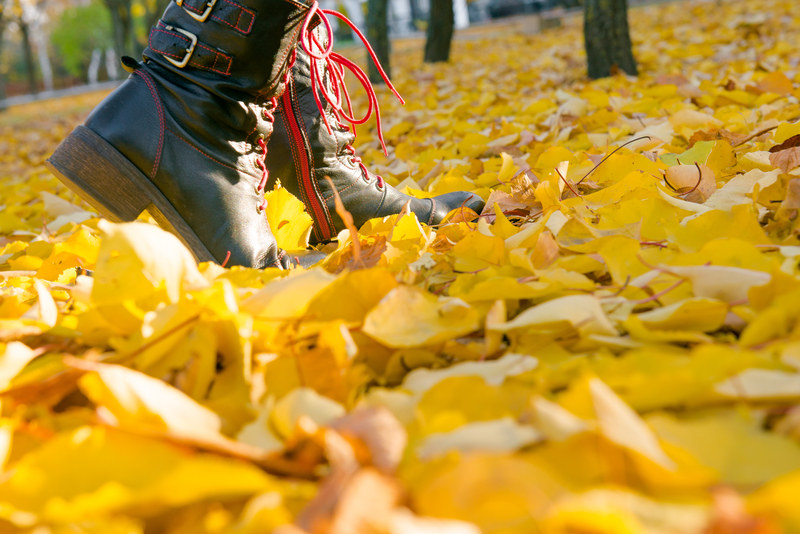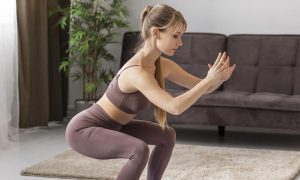What do you think of when you hear the word “fall”? Around this time of year, it may conjure up thoughts of pumpkin spice, apple cider, butternut squash, cooler temperatures or the impending winter upon us. As dancers, performers and educators, it may instill fear, anxiety and utter panic. Falling and injuries in general are enough to terrify the best of us. One “good” fall or injury and your career can be over. It doesn’t have to be left up to fate. There are steps that can be taken to minimize injury and prevent serious falls.
It is important to know that there are ways to prevent injury outside of conditioning, stretching or proper diet. We can harness the power of our mind-body connection to become more aware of our environment, spatial awareness and overall kinesphere, allowing us to focus on prevention, not just intervention. Furthermore, should an individual endure an injury, the following steps can significantly improve recovery time and lead to a decline in future injuries.
5 steps to minimize injury
#1. Mindfully connect to your body on and off the dance floor.
It is important to get a baseline for emotional and physical health. This can be established by practicing mindfulness and bodyfulness throughout the day. Noticing what we are feeling and sensing before, during and after we dance can have a tremendous impact on overall health. Increasing mindfulness can lead to an increase in overall awareness of the body’s limitations, both physical and emotional.
#2. Connect to your senses.
We are all familiar with the five senses of smell, sight, taste, touch and sound, but did you know that we have more? According to an article published in the World Economic Forum, neuroscientists might argue that we have 22-33 different senses. Here are a few you should know about: equilibrioception (sense of balance), proprioception (sense of where your body is in space), kinaesthesia (sense of movement), thermoception (sense of temperature), nociception (the ability to feel pain) and chronoception (how we sense the passing of time). Taking time throughout the day to check in with as many as possible can improve body knowledge which again reinforces healthy limits.
#3. Practice contact improvisation.
Contact improvisation is the exploration of one’s own body in relation to others. It incorporates weight sharing and touch, in addition to movement awareness. Weight sharing in itself is another wonderful way to explore shifts in the center of gravity. This can essentially keep an individual on his/her toes allowing for adaptation and adjustment of the body in space.
#4. Embrace authentic creative movement.
Started by Mary Starks Whitehouse in the 1950s, authentic movement can be seen as free association of the body. Authentic movement allows an individual to move in the moment and to the beat of one’s own drum so to speak. Moving authentically allows an individual to explore his/her own range and repertoire of movement. This has the ability to enhance body awareness, kinaesthesia and proprioception, which, as mentioned previously, can diminish the risk of injury and prevents falls.
#5. Make mental health a priority.
Mental health and dance have not always gone hand-in-hand, and there is still a lot of work that needs to be done to make this a collaborative effort. Taking it upon ourselves to prioritize mental health on and off the dance floor, however, will improve our abilities to manage injuries. How? When we are under great stress, we tend to overdo, over-train and contribute to greater tension in our body. This is a recipe for injury. While it is important to push boundaries and challenge our own limits, it should not be at the expense of our health.
This is just a starting point. There are many other tips to consider, many from PTs, OTs, physicians and other professionals. Additional tips include but are not limited to:
- Staying hydrated
- Wearing proper attire and shoes
- Warming up and cooling down
- Getting adequate rest
- Avoid overtraining
- Cross-training in all parts of the body.
Following these steps and tips will help you become an ally to your body. It is vital to listen to your body rather than ignore the signs and signals it is sending you. Your body is always talking, and it is important that you listen to it. This will aid in injury prevention because you will notice when your body needs rest or is on the verge of injury and therefore can allow it time to recuperate or give it the extra attention it deserves to continue performing at the most optimal level.
Of course, if you find yourself unable to slow down, relax or focus on your mental health, there are many professional resources that you may find helpful. Here are a few:
The American Dance Therapy Association
www.adta.org
Doctors for Dancers
www.doctorsfordancers.com
Counselling for Dancers
www.counsellingfordancers.com

By Erica Hornthal, LCPC, BC-DMT, Dance/Movement Therapist, Chicago Dance Therapy.
Erica Hornthal is a licensed professional clinical counselor and board certified dance/movement therapist based in Chicago, IL. She received her MA in Dance/Movement Therapy and Counseling from Columbia College Chicago and her BS in Psychology from the University of Illinois Champaign-Urbana. Erica is the founder and CEO of Chicago Dance Therapy, the premier dance therapy and counseling practice in Chicago, IL. As a body-centered psychotherapist, Erica assists clients of all ages and abilities in harnessing the power of the mind-body connection to create greater awareness and understanding of emotional and mental health. For more, visit www.chicagodancetherapy.com.















